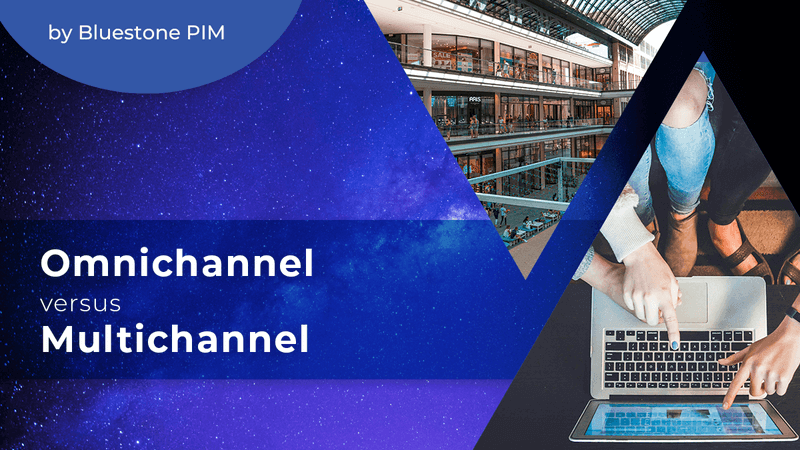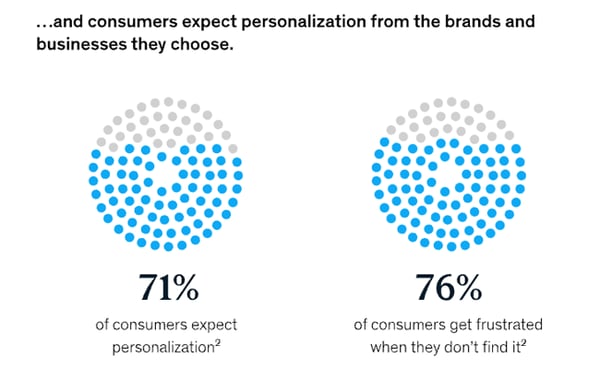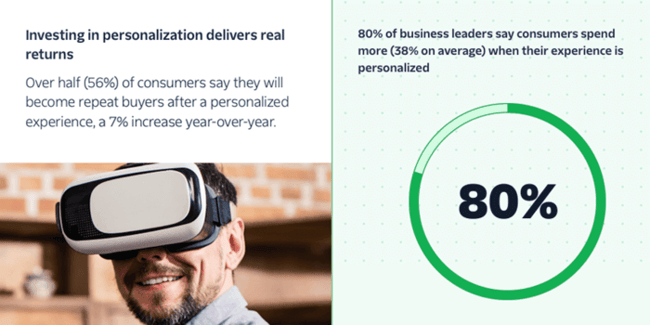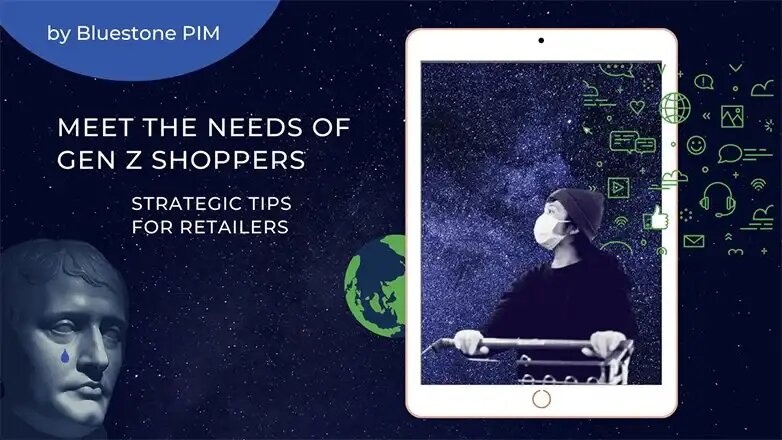Omnichannel vs Multichannel: Which is Better for eCommerce?

When the concept of eCommerce first took off, most retailers adopted a multichannel strategy to test online engagement and sales alongside physical stores. For those initial years, this worked out well for them.
But with the ubiquity of smartphones, the rise of a tech-savvy generation, and the explosion in the number of customer touchpoints, the expectations and behaviors of today's customers have radically changed. Not only can they shop where it is most convenient for them, but they also demand seamless and personalized experiences at every touchpoint.
Under these conditions, can a mere multichannel approach really meet the demand for convenience and personalization? With customer satisfaction on the line, retailers now wake up to the possibilities of an omnichannel approach — because that personal touch could be the difference between a loyal repeat customer and one easily lost to a more savvy competitor.
This article explains the differences between omnichannel and multichannel and explores how retailers can balance their strengths to connect with their customers through consistent and personalized shopping experiences.
What is Multichannel?
Multichannel is the strategy of marketing and selling products via multiple online and offline channels. This strategy uses different channels, such as social media, apps, websites, stores, mail and magazines to engage with customers and potential buyers in different ways.
A Harvard Business Review report highlights the importance of this cross-channel engagement: 73% of customers use multiple touchpoints in their buying process.
Since retailers cannot predict exactly which channels will drive sales, a multichannel presence maximizes the connection with the customer. By being present on all relevant customer touchpoints, brands can increase their reach and give customers the flexibility to research and buy products the way they want.
For example, LinkedHelper automates the process of finding clients and converting them into loyal customers by streamlining operations, ensuring consistent engagement, and enabling personalized marketing efforts that foster lasting relationships. To fully implement a multichannel strategy, explore additional tools to cover all potential customer touchpoints.
Example of a Multichannel Strategy
To explain a multichannel retail approach in practice, let's look at a clothing brand with the following key elements as an example:.
- Operate physical stores where customers can see new clothing collections, try on items, and buy them directly in-store.
-
Sell the entire clothing and accessories line online via its own website and popular eCommerce sites.
-
Allow social media followers to purchase their favorite items directly from the store or send messages about the items
-
Distribute seasonal print catalogs presenting new products and upcoming fashion trends
The Problem with Multichannel — Inability to Personalize the Shopping Experience
Essentially, a multichannel approach means that you're present on several channels. But, as the channels aren't connected to each other, each one functions as a silo that stores its own customer and product information in a separate database.
This means that the data, such as product details and customer profiles, usually remains in that channel only unless it's transferred over. So when customers move from one online touchpoint to another, they're treated as new customers each time.
This can be worrying for retailers, as Accenture’s 2018 Personalization Pulse Check report found that 91% of consumers are more likely to shop with brands who recognize, remember, and provide relevant offers and recommendations.
Without first aggregating customer engagement details such as purchase history, interactions and preferences into a profile that connects all touchpoints, it's very difficult, if not impossible, to achieve personalization through relevant recommendations, special promotions or tailored product content for each customer.
What Is Omnichannel?
Omnichannel is a strategy that focuses on offering customers a seamless, consistent shopping experience across all touchpoints.
While multichannel handles each touchpoint separately, omnichannel goes one step further by connecting these touchpoints into a unified, cohesive experience that personalizes the customer interaction regardless of channel.
By synchronizing product and customer data across all channels, retailers eliminate problems that customers often face when switching between channels, such as inconsistent product details, lack of insight into purchase history, or having repeating themselves to different representatives.
Example of an Omnichannel Strategy
To illustrate what an omnichannel experience looks like for customers, let's look at the shopping journey of one customer, Jon, using the clothing brand as an example:
-
Jon browses the clothing brand's website looking for style inspiration. He likes a jacket and adds it to his wishlist after making an account.
-
A few days later, Jon receives a personalized email from the brand. The email reminds him about the jacket in his wishlist and also contains fashion tips for the jacket.
-
Jon decides that he wants to try the jacket on. He checks the availability of the jacket on the website and finds that his local store has it in stock.
-
Jon drops by the store and tries on the jacket. Although it fits well, he's not ready to purchase it yet. Before he leaves, he downloads the brand's mobile app and logs in with the account he created earlier. His wishlist is synchronized between the devices.
-
Over the next few days, Jon receives personalized recommendations on the app for jackets with a similar style to the one he likes, as well as complementary items such as shirts, pants and accessories that would go well with the jacket.
-
A week later, Jon receives a push notification from the app informing him that the jacket on his wishlist is now 20% off as part of a limited-time sale.
-
Convinced by the discount and the personalized recommendations, Jon decides to make the purchase via the app. He chooses the option to pick up the jacket at the local store.
An example of omnichannel retailing in practice is Sephora SEA, which describes itself as "a leader of prestige omni-retail" and received the 2021 Personalization Expert Award from Dynamic Yield.
At the heart of Sephora's omnichannel strategy is a mobile app that serves as a hub for all things beauty and drives repeat visits with video tutorials, news and trends. Another key move in 2018 was the merging of Sephora's digital and physical retail teams to develop a truly unified omnichannel approach that focuses on total sales and tracks the entire customer journey from online browsing to reps and in-store purchases.
In its August 2020 shareholder letter, LVMH, Sephora's parent company, even attributed the market share gains during the COVID-19 pandemic to the "inventiveness and the effectiveness of its omnichannel strategy", despite almost all stores worldwide being closed for nearly two months.
Differences Between Multichannel and Omnichannel
There are two main differences in how multichannel and omnichannel strategies approach things: Focus and personalization.
A multichannel approach only focuses on being present on multiple channels, but it doesn't necessarily connect them. It doesn't link touchpoints together or take into account the preferences of individuals to give them a consistent experience as they move between channels. Brands may reach more potential customers this way, but they offer inconsistent, impersonal experiences.
An omnichannel strategy, on the other hand, transforms the individual channels into a unified experience that is all about knowing each customer intimately. With this approach, retailers can provide a tailored, seamless service everywhere by combining customer data and behaviors. This allows them to recognize their customers no matter how they interact — online, via mobile apps, or in-store — and offer them a personalized shopping experience.
So Which Approach Is Better?
At first glance, an omnichannel strategy seems like the obvious choice as it improves the shopping experience and increases sales in the long term, but depending on the company's goals and resources, this may not be the case.
For retailers who want to be present on multiple channels and do not have the need for full integration, multichannel is the right choice. In contrast to omnichannel, multichannel often has no complex technological requirements, making it easy and quick to implement with limited budgets. It is ideal for businesses where customers have relatively simple needs or make impulse purchases, like a mom-and-pop shop.
Omnichannel is the way to go for retailers who want to enable a continuous, seamless shopping journey between all customer touchpoints, but setting it up will require significant investment in reliable technology stack. Developing an omnichannel experience requires the integration of multiple solutions, each covering a specific area, such as a Customer Relationship Management (CRM) system to maintain consistent customer profiles, a Marketing Automation Platform (MAP) to run personalized campaigns, and a Product Information Management (PIM) system to keep product data in sync everywhere.
Why the Fuss over Personalization?
Personalization is more important to customers than many brands realize.
As the Next in Personalization 2021 report published by McKinsey shows, 71% of respondents expect personalized communications and products/services from the companies they buy from, and 76% of them are frustrated when this isn't the case.
And what happens when they don't get the level of personalization they expect? According to Adobe's 2018 Consumer Content Survey, 66% of them will simply not complete the purchase.

Source: Mckinsey.com, "The value of getting personalization right—or wrong—is multiplying"
However, companies can benefit from personalization if it's done well.
Segment, a customer data platform (CDP) provider, states in its The State of Personalization 2023 report that 80% of business leaders said that consumers spent an average of 38% more when their experience was personalized, and 56% of consumers say they will become repeat buyers after a personalized experience.

Source: segment.com, "The State of Personalization 2023"
Even large companies like Google are recognizing the importance of personalization.
On 27 March, 2024, Google rolled out a new Style Recommendations feature, initially targeting signed-in U.S. shoppers using mobile browsers and the Google app. When shoppers search for items like apparel, shoes and accessories, they are presented with different style recommendations that they can rate with a thumbs up or thumbs down. They will then instantly receive personalized shopping results based on the products they like.

Source: blog.google, "Get more personalized shopping options with these Google tools"
It's clear that personalization has evolved from a "nice-to-have" to a fundamental expectation of shoppers. They want brands to understand their individual needs, preferences, and shopping behavior and offer them a personalized shopping experience.
And they'll buy from those who do.
Leverage Product Information to Drive Personalization
To connect with today's customers, retailers need to offer personalized experiences across all channels. In eCommerce, providing consistent, tailored product information is key to making this happen.
By centralizing product information in a single source of truth, like a PIM system, retailers can maintain an accurate, up-to-date product catalog that is seamlessly synchronized with all sales and marketing channels. This allows retailers to provide each person with dynamic, personalized product recommendations and rich product content tailored to their unique profiles and buying situations throughout their shopping journey.
If you want to know how Bluestone PIM can help you effortlessly manage product information and seamlessly integrate it into your multi- or omnichannel strategy, contact our advisors for a free consultation, take a product video tour to take a walkthrough of our PIM system, or schedule a demo meeting to conduct a hands-on trial session.
Editor’s note: This post was originally published in July 2018 and has been updated with the latest information.




